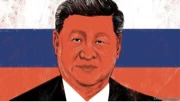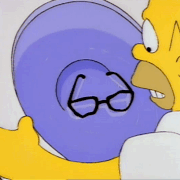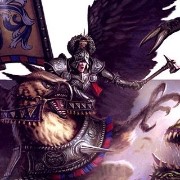|
Burgers have buns, sandwiches have sliced bread, easy to remember.
|
|
|
|

|
| # ? Jun 10, 2024 11:18 |
|
hot dogs have buns. Is a hot dog a burger?
|
|
|
Your Brain on Hugs posted:Burgers have buns, sandwiches have sliced bread, easy to remember. yep
|
|
|
|
|
Shear Modulus posted:hot dogs have buns. Is a hot dog a burger? no just because they are both called buns they are not the same
|
|
|
|
Shear Modulus posted:hot dogs have buns. Is a hot dog a burger? no but both are sandwiches
|
|
|
|
whales are fish
|
|
|
|
in glasgow they call a hoagie a hoggie, that is all
|
|
|
|
Dreylad posted:https://www.lrb.co.uk/the-paper/v46/n05/pankaj-mishra/the-shoah-after-gaza Pankaj Mishra deserves better than this thread
|
|
|
|
 
|
|
|
|
mmmmm smells like Glennsright
|
|
|
|
Atrocious Joe posted:https://www.theatlantic.com/magazine/archive/2024/04/us-anti-semitism-jewish-american-safety/677469/ The jewish vacation from history ended on September 11, 2001. It didn’t seem that way at the time. But the terror attacks opened an era of perpetual crisis, which became fertile soil where the hatred of Jews took root. Though Osama bin Laden claimed credit for the plot, that didn’t stop some people from trying to shift the blame. One theory explained in exquisitely absurd detail how Mossad, the Israeli intelligence service, had toppled the Twin Towers. But there was also a more sophisticated version of this conspiracy theory, one that had a patina of academic respectability. On the left, it became commonplace to fulminate against the neoconservatives, warmongering intellectuals said to be whispering in the ear of the American establishment, urging the invasion of Iraq and war against Iran. This wasn’t fully untethered from reality: The neocons were a group of largely Jewish think-tank denizens and policy operatives, some of whom held top posts in President George W. Bush’s administration. But the angry talk about neocons also trafficked in dangerous old tropes. It inflated their role in world events and ascribed the worst motives to them. Men like Paul Wolfowitz, the second-highest-ranking official in Bush’s Pentagon, and William Kristol, the editor of The Weekly Standard, were portrayed by critics on the left as bamboozlers undermining the national interest in service of their stealth loyalty to Israel. Secretary of Defense Donald Rumsfeld, for one, took exception to the idea that Jews were pulling the strings of the United States government. “I suppose the implication of that is that the president and the vice president and myself and Colin Powell just fell off a turnip truck to take these jobs,” he said. In 2007, Stephen Walt and John Mearsheimer, professors at Harvard and the University of Chicago, respectively, spelled out what others implied in The Israel Lobby and U.S. Foreign Policy, a book published by a venerable house, Farrar, Straus and Giroux, that soon arrived on the New York Times best-seller list. This was the opposite of the schmaltzy Streisand tribute—the Jewish state as not a friend but a villain surreptitiously manipulating American power to further its own ends. One year later, Lehman Brothers, a bank founded in 1850 by the son of a Jewish cattle merchant from Bavaria, collapsed. That news was followed by the revelation that Bernie Madoff had masterminded the largest-known Ponzi scheme in history. Although politicians, on the whole, refrained from casting Jews as the primary culprits of the 2008 financial crisis—which was, in fact, systemic—a sizable portion of the public harbored this thought. Stanford University professors conducted a survey that found that nearly a quarter of the country blamed Jews for crashing the global economy. Another 38.4 percent ascribed at least some fault to “the Jews.” In the era of perpetual crisis, a version of this narrative kept recurring: a small elite—sometimes bankers, sometimes lobbyists—maliciously exploiting the people. Such narratives helped propel Occupy Wall Street on the left and the Tea Party on the right. This brand of populist revolt had long been the stuff of Jewish nightmares. A fear of the mob suffused masterworks of the Golden Age—Theodor Adorno’s The Authoritarian Personality, Hannah Arendt’s The Origins of Totalitarianism, Richard Hofstadter’s Anti-intellectualism in American Life. Haunted by the Holocaust and inherited memories of pogroms, these writers warned how a society might fall prey to a demagogue who tapped into prejudice. After 2008, a version of their prophecy came to pass. The right settled on a Jewish billionaire as their villain of choice: George Soros. An idea took hold, and not just on extremist blogs. The mainstream of the Republican Party seeded the image of Soros as the “shadow puppet master,” in the words of the former Fox News host Bill O’Reilly. In elevating the figure of Soros and invoking him so frequently, Fox News and Republican politicians were also, intentionally or not, drawing on the deeply implanted imagery of the Jewish financier bankrolling the destruction of Christian civilization. In 2018, Fox News began carrying images of migrant caravans headed from Central America toward Texas, a tide of humanity it described as an “invasion.” Though they had no evidence to bolster the charge, Republican politicians insinuated that the caravans were paid for by Soros. Representative Matt Gaetz tweeted a video of two men handing out cash to a line of Honduran migrants, accompanied by the question “Soros?” When President Trump was asked about Soros’s role in funding a caravan, a week after a pipe bomb was found in Soros’s mailbox, and days after the Tree of Life shooting, he told reporters, “I wouldn’t be surprised.” Soros was a central character in a new master narrative, much of it adapted from European sources. The spine of the story was borrowed from a French author named Renaud Camus, a socialist turned far-right reactionary who wrote a 2011 book called The Great Replacement, warning that elites intended to diminish the white Christian presence in Europe by flooding the continent with migrants. The Jews weren’t a central feature of Camus’ theory. But when elements of the American right embraced it, they inserted Soros and his fellow Jews as the masterminds of the elite plot. This became the basis for the chant “Jews will not replace us.” Jews were the antagonists of the conspiracy theory because they occupied a special place in the bizarre racial hierarchy of American ethno-nationalism. Eric Ward, an activist who is among the most rigorous students of white supremacy, has put it this way: “At the bedrock of the movement is an explicit claim that Jews are a race of their own, and that their ostensible position as White folks in the U.S. represents the greatest trick the devil ever played.” That is, Jews were able to pass as white people, but they were really stealth agents working for the other side of the race war, using immigration to subvert white Christian hegemony. This notion planted itself in the mind of Robert Bowers, a loner who lived in a suburb of Pittsburgh. He became obsessed with the work of HIAS, originally the Hebrew Immigrant Aid Society. It was formed in 1902 with the intention of easing the arrival of Jewish refugees fleeing pogroms. The group’s evolution was emblematic of the trajectory of Jewish liberalism. As American Jews settled into a comfortable existence in their new land, HIAS’s mission expanded. It has field offices in more than 20 countries, including a branch on a Greek island to tend to Syrian, Iraqi, and Afghan migrants. On October 19, 2018, the Tree of Life synagogue in Pittsburgh was participating in a National Refugee Shabbat, which was the brainchild of HIAS. The event stoked Bowers’s rage. “HIAS likes to bring invaders in that kill our people,” he wrote on Gab, the Christian-nationalist social-media site. Just before he entered the synagogue’s sanctuary, armed with three semiautomatic pistols and an AR‑15 rifle, he posted, “Open you Eyes! It’s the filthy EVIL jews Bringing the Filthy EVIL Muslims into the Country!!” A faith in immigration—the idea of America as a sanctuary for the refugee, the belief that subsequent groups of arrivals would experience the same up-from-the-shtetl trajectory—was a core tenet of Jewish liberalism. A Jewish poet had written the lines about huddled masses inscribed at the base of the Statue of Liberty. If America was a nation of immigrants, that made Jews quintessential Americans. But now this ideal was the basis for Jews’ vilification. At the Tree of Life synagogue, it was used to justify their slaughter. In the old Jewish theory of American politics, the best defense against the anti-Semitism of the right was a united left: minorities and liberal activists locking arms. When I was young, rabbis and elders reverently told us about the earnest young Jews in chunky glasses who had jumped aboard the Freedom Rides; about Rabbi Abraham Joshua Heschel, in his unmissable kippah, marching right next to Martin Luther King Jr.; and about the martyrdom of Andrew Goodman and Michael Schwerner, two Jews who had been murdered alongside James Chaney, a Black Mississippian, for their work registering Black Americans to vote. A coalition of the tolerant pressed the country to live up to its ideals. Later, I would learn that those memories were a bit gauzy. In the late 1960s, former comrades began to quietly, then brusquely, discard this spirit of common cause. Younger activists in the civil-rights movement took a hard turn toward Black Power and dismissed the old liberal theory of change as a melioristic ruse. Anti-war protesters embraced the decolonization struggles of the developing world. After Israel captured the Gaza Strip and the West Bank in 1967, many came to view the Jewish state as a vile oppressor. (This was well before right-wing Israeli governments saturated the occupied territories with Jewish settlers.) Even as Israel’s shocking victory in the Six-Day War, 22 years after the liberation of Auschwitz, filled American Jews with pride and confidence, a meaningful portion of America’s left turned on Israel. The turmoil of the late ’60s presaged the rupture that has occurred over the past decade or so. A new ideology has taken hold on the left, with a reordered hierarchy of concerns and an even greater skepticism of the old liberal ideals. This rupture was propelled by the menace of Donald Trump. His election jolted his opponents to take emergency measures. The left began describing itself as the Resistance, which implied a more confrontational style than that of Nancy Pelosi floor speeches or Center for American Progress white papers. Even before Trump took office, the Resistance announced a mass protest set to defiantly descend on the capital, what organizers called the Women’s March on Washington. In an early planning meeting, at a New York restaurant, an activist named Vanessa Wruble explained that her Judaism was the motivating force in her political engagement. But Wruble’s autobiographical statement of intent earned her a rebuke. According to Wruble, two members of the inner circle planning the march told her that Jews needed to confront their own history of exploiting Black and brown people. Tablet magazine later reported that Wruble was told that Jews needed to repent for their leading role in the slave trade—a fallacious charge long circulated by the Nation of Islam. (The two organizers denied making the reported statements.) That moment of tension never really subsided, either for Wruble or for the left. When the march’s organizers published their “unity principles,” they emphasized the importance of intersectionality, a theory first introduced by the law professor Kimberlé W. Crenshaw. It would be insufficient, she argued, for courts to focus their efforts on one narrow target of discrimination when it takes so many forms—racism, sexism, homophobia—that tend to reinforce one another. Her analysis, incisive in the context of the law, was never intended to guide social movements. Transposed by activists to the gritty work of coalition-building, it became the basis for a new orthodoxy—one that was largely indifferent to Jews, and at times outwardly hostile. When the Women’s March listed the various injustices it hoped to conquer on its way to a better world, anti-Semitism was absent. It was a curious omission, given the central role that Jews played in the conspiracies promoted by the MAGA right, and a telling one. Soon after the march, organizers pushed Wruble out of leadership. She later said that anti-Semitism was the reason for her ouster. (The organizers denied this charge.) The intersectional left self-consciously rebelled against the liberalism that had animated so much of institutional Judaism, which fought to install civil liberties and civil rights enforced by a disinterested state that would protect every minority equally. This new iteration of the left considered the idea of neutrality—whether objectivity in journalism or color blindness in the courts—as a guise for white supremacy. Tolerance, the old keyword of cultural pluralism, was a form of complicity. What the world actually needed was intolerance, a more active confrontation with hatred. In the historian Ibram X. Kendi’s formulation, an individual could choose to be anti-racist or racist, an activist or a collaborator. Or as Linda Sarsour, an activist of Palestinian descent and a co-chair of the Women’s March, put it, “We are not here to be bystanders.” To be a member of this new left in good moral standing, it was necessary to challenge oppression in all its incarnations. And Israel was now definitively an oppressor. The American left hadn’t always imposed such a litmus test. During the years of the Oslo peace process, groups such as Students for Justice in Palestine had no problem attending events with liberal Zionists. Back then, the debate was over the borders of Israel, not over the fact of its existence. But that peace process collapsed during the last days of the Clinton administration, and whatever good faith had existed in that brief era of summits and handshakes dissipated. Hamas unleashed a wave of suicide bombings in the Second Intifada. And in the aftermath of those deadly attacks, successive right-wing Israeli governments presided over repressive policies in the West Bank and an inhumane blockade of Gaza. Palestinian activists and their allies began the Boycott, Divestment, Sanctions movement, pushing universities to divest from Israel. The new goal was no longer coexistence between Arabs and Jews. It was to turn Israel into an international pariah, to stop working with all Israeli institutions—not just the military, but also symphonies, theater groups, and universities. In that spirit, it became fashionable for critics of Israel to identify as “anti-Zionist.” Within the Jewish establishment, there’s a tendency to impute anti-Semitism to anyone who describes themselves that way. That has always struck me as intellectually imprecise and, occasionally, as a rhetorical gambit to close down debate. But there’s a reason so many Jews bristle at the thought of anti-Zionism finding a home on the American left: Zionist can start to sound like a synonym for Jew. Zionists stand accused of the same crimes that anti-Semites have attached to Jews since the birth of Christianity; Jews are portrayed as omnipotent, bloodthirsty baby-killers. Knowing the historical echoes, it’s hard not to worry that the anger might fixate on the Jewish target closest at hand—which, indeed, it has. In 2014, dorms at NYU where religiously observant Jews lived received mock eviction notices—“We reserve the right to destroy all remaining belongings,” read the flyer slipped under doors—as if intimidating college kids with unknown politics somehow represented a justifiable reprisal for Israeli-government action in the West Bank. The same notices appeared at Emory University, in Atlanta, in 2019. At the University of Vermont and SUNY New Paltz, groups that helped sexual-assault survivors were accused of purging pro-Israel students from their ranks. “If you don’t support Palestinian liberation you don’t support survivors,” the Vermont group exclaimed. Years before October 7, students at Tufts University, outside Boston, and the University of Southern California moved to impeach elected Jews in student government over their support for Israel’s existence. This wasn’t normal politics. It was evidence of bigotry. Among the primary targets of the activists were the Hillel centers present on most college campuses. These centers occasionally coordinate trips to Israel and, on some campuses, sponsor student groups supportive of Israel. Those facts led pro-Palestinian activists to describe Hillel as an arm of the “Israeli war machine.” At SUNY Stony Brook, activists sought to expel Hillel from campus, arguing, “If there were Nazis, white nationalists, and KKK members on campus, would their identity have to be accepted and respected?” At Rice University, in Texas, an LGBTQ group severed ties with Hillel because it allegedly made students feel unsafe. What made this incident darkly comic is that Hillel couldn’t be more progressive on issues of sexual freedom. What made it so worrying is that Hillel’s practical purpose is not to defend Israel, but to provide Shabbat dinners and a space for ritual and prayer. To condemn Hillel is to condemn Jewish religious life on campus. As exclusion of Jews became a more regular occurrence, the leadership of the left, and of universities for that matter, had little to say about the problem. To give the most generous explanation: Jews simply didn’t fit the analytic framework of the new left. At its core, the intersectional left wanted to smash power structures. In the American context, it would be hard to place Jews among the ranks of the oppressed; in the Israeli context, they can be cast as the oppressor. Nazi Germany definitively excluded Jews from a category we now call “whiteness.” Today, Jews are treated in sectors of the left as the epitome of whiteness. But any analysis that focuses so relentlessly on the role of privilege, as the left’s does, will be dangerously blind to anti-Semitism, because anti-Semitism itself entails an accusation of privilege. It’s a theory that regards the Jew as an all-powerful figure in society, a position acquired by underhanded means. In the annals of Jewish history, accusations of privilege are the basis for hate, the kindling for pogroms. But universities too often ignored this lesson from the past. Instead, they acted, as the British comedian David Baddiel put it in the title of his prescient book about progressive anti-Semitism, as if “Jews don’t count.” In the death spiral of liberalism, extremism on the right begets extremism on the left, which begets further extremism on the right. To protest the censoriousness of the new progressives, right-wing edgelords and trolls attempted to seize the mantle of liberty. The most powerful of the edgelords was Elon Musk, who purchased Twitter ostensibly to save discourse from the woke mob. To make good on his noble aims, he reversed bans that the platform’s previous regime had imposed on the most vile anti-Semites, including the white nationalist Patrick Howley, the comic Sam Hyde, and the Daily Stormer’s founder, Andrew Anglin. By restoring them to the site, Musk was, in essence, conceding that their words shouldn’t have been considered taboo in the first place. He legitimized their claims of victimhood, the sense that they had been excluded only because they’d offended the wrong people. In fact, Musk hinted that he shared this conspiratorial view of censorship. In May 2023, he retweeted an aphorism that he attributed to Voltaire: “To learn who rules over you, simply find out who you are not allowed to criticize.” Those words were actually uttered by a neo-Nazi named Kevin Alfred Strom, not the French philosopher. It shouldn’t have been hard to imagine that the words had dubious origins, because they captured a view of the world in which shadowy forces furtively censor their enemies. Nor was it hard to imagine that those shadowy forces might include the Anti-Defamation League, which relentlessly called attention to the proliferation of Jew hatred on Twitter under Musk’s ownership. Musk threatened to sue the group, accusing it of trying to “kill this platform by falsely accusing it & me of being anti-Semitic.” The Jews, he all but spelled out, were those who couldn’t be criticized—which, by the logic of the Strom quote, made them society’s secret masters. Musk wasn’t alone in this argument. In 2022, Dave Chappelle used the opening monologue of Saturday Night Live to muse about the cancellation of the hip-hop artist Ye (formerly Kanye West), who had lost a deal with Adidas after he promised, among other things, to go “death con 3 on JEWISH PEOPLE.” Chappelle exuded empathy for Ye. “I don’t want a sneaker deal, because the minute I say something that makes those people mad, they’re going to take my sneakers away … I hope they don’t take anything away from me,” he said, adding with a smile and a conspiratorial whisper: “Whoever they are.” There was no mystery about his use of pronouns: “I’ve been to Hollywood … It’s a lot of Jews. Like, a lot.” He went on, “You could maybe adopt the delusion that the Jews run show business.” Chappelle practices shock comedy as a form of shock therapy: The authoritarian impositions of the left justify offensive comments, which are a form of defiance. He has taken a genuine problem—anti-liberalism on the left—and used it as a pretext for smuggling anti-Semitism into acceptable discourse. That Chappelle and Musk see fit to indulge anti-Semitism in order to protect freedom of speech contains a dark irony. In the 20th century, starting with Louis Brandeis’s dissents on the Supreme Court, Jews stood at the vanguard of the movement to protect “subversive advocacy,” even when it came at their own expense. This could be understood as a defense of the Talmudic tradition of disagreement, what Rabbi David Wolpe calls the “Jewish sacrament” of debate. The movement culminated in Skokie, Illinois, in 1977, when the ACLU deployed the lawyer David Goldberger to sue to allow neo-Nazis to march through the Chicago suburb, which was filled with Holocaust survivors. The Jewish community was hardly unanimous on the Skokie question—unanimity would have been inconsistent with the tradition—but the ACLU position reflected a commitment to free speech officially espoused by major Jewish communal institutions in the postwar years. In the Jewish vision of free speech, open interpretation and endless debate mark the path to knowledge; the proliferation of discourse is the antidote to bad ideas. But in the reality of social media, free speech also consists of Jew hatred that masquerades as comic entertainment, a way to capture the attention of young men eager to rebel against the strictures of what they decry as wokeness. When I asked Oren Segal, who runs the ADL’s Center on Extremism, to point me to a state-of-the-art anti-Semitic hate group, he cited the Goyim Defense League. The spitefully silly name reflects its methods, which include pranks and stunts broadcast on its website, Goyim TV. Its leader sometimes dresses as an ultra-Orthodox Jew, calling himself the “Honest Rabbi.” In one demented piece of guerrilla theater, he apologizes on behalf of the Jewish people for fabricating stories about the Holocaust. The group has attempted to popularize the slogan “Kanye is right about the Jews,” hanging a banner proclaiming it on a freeway overpass in Los Angeles and projecting it on the side of a football stadium in Jacksonville, Florida, as 75,000 fans filed out. GDL hecklers have stood in front of Florida synagogues and Holocaust museums, shouting, “Leave our country. Go back to Israel” and “Heil Hitler.” In a short span, as the edgelords successfully pushed the limits, American culture became permissive regarding what could be said about Jews. Anti-Semitism crept back into the realm of the acceptable. For a brief moment, it felt as if the October 7 attacks might reverse the tide, because it should have been impossible not to recoil at the footage of Hamas’s pogrom. Israel had yet to launch its counterattack, so there was no war to condemn. Still, even in this moment of moral clarity, the campus left couldn’t muster compassion. At Harvard, more than 30 student groups signed a letter on October 7, holding “the Israeli regime entirely responsible for all unfolding violence.” Days later, the incoming head of NYU’s new Center for Indigenous Studies described the attacks as “affirming.” This sympathy for Hamas, when its crimes were freshest, was a glimpse of what was about to come. On the afternoon of October 11, Rebecca Massel, a reporter at the Columbia Daily Spectator, received a tip. She was told that a woman, her face wrapped in a bandanna, had assaulted an Israeli student in front of Butler Library in a dispute over flyers depicting hostages held by Hamas. The woman’s alleged weapon was a broomstick. Her battle cry was said to be “gently caress all of you prick crackers.” After striking him with the broomstick, the man said, she attempted to punch him in the face. By the end of the fracas, she had bruised one of his hands and sprained a finger on the other. Massel began to report out the story. She spoke with the victim, who told her, “Now, we have to handle the situation that campus is not a safe place for us anymore.” She spoke with the NYPD, which confirmed that it had arrested the woman, who was charged with hate crimes and has pleaded not guilty. Massel and her editors curbed their impulse to quickly score a scoop, double-checking every sentence. They didn’t publish the story until 3 a.m. on October 12. Later that morning, Massel, a sophomore studying political science, was sitting in her Contemporary Civilization seminar when her phone lit up. It was her editor, calling her back. She had texted him to get his sense of the response her article had elicited, so she stepped out of class to hear what he had to say. She had already caught a glimpse of posts on social media, harping on her Jewishness and accusing her of having a “religious agenda.” She’d worried that these weren’t stray attacks. The editor told her the paper had been inundated. The messages it had received about the article were vitriolic, but he didn’t give her any specifics. Before returning to class, she checked her own email. A message read, “I hope you loving get what you deserve … you racist freak.” For as long as she could remember, Massel had wanted to be a journalist. She’d founded the newspaper at her elementary school. During high school, she’d read She Said, Jodi Kantor and Megan Twohey’s book about investigating Harvey Weinstein’s sexual assaults. The New York Times reporters insisted that they were journalists, not feminist journalists. Massel vowed to take the same approach. The accusations of bias, therefore, didn’t just feel anti-Semitic. They felt like an attack on the integrity that she hoped would define her work. But anger was an emotion for another day. At that moment, she was overwhelmed by fear. She thought about what the Israeli student had told her the day before. A dean had apparently advised him to leave campus because the university couldn’t guarantee his safety. Now Massel felt unsure of her own physical well-being. She decided that she would stay with her parents until she could get a better sense of the fury directed at her. In her unnerved state, Massel threw herself into her journalism. She decided to interview Jewish students, from all corners of the university, to gauge their mood. After the office of public safety assured her that she could return to campus, she parked herself in the second-floor lounge of Columbia’s Hillel center. When she overheard a student mention an incident, she would approach them and ask to talk. Over the course of two weeks, Massel spoke with 54 students. What she amassed was a tally of fear. Thirteen told her that they had felt harassed or attacked, either virtually or in person. (One passerby had barked “gently caress the Jews” at a small group of students.) Thirty-four reported that they felt targeted or unsafe on campus. (At one precarious moment, the Hillel center went into lockdown, out of concern that protesters might descend on the building.) Twelve said that they had suppressed markers of their Jewish identity, wearing a baseball cap over a yarmulke or tucking a Star of David necklace into a sweatshirt. She learned that a group of students had created a group-chat system to arrange escorts, so that no Jew would have to walk across campus alone if they felt unsafe. Perhaps even more ominously, Massel uncovered incidents in which teachers expressed hostility toward Jewish students. One Israeli student told Massel that a professor had once said to him, “It’s such a shame that your people survived just in order to perpetuate another genocide.” When I made my own calls to students and faculty, I heard similar stories, especially instances of teaching assistants seizing their bully pulpit to sermonize. One TA wrote to their students, “We are watching genocide unfold in real time, after a systematic 75+ years of oppression of the Palestinian people … It feels ridiculous to hold section today, but I’ll see you all on Zoom in a bit.” One student left class in the middle of a professor’s broadside against Israel in a required course in the Middle East–studies department. Afterward, he sent an email to the professor explaining his departure, to which the professor wrote back, saying they could discuss it in class later. When the student returned, the professor read his email aloud to the whole class, and invited everyone to discuss the exchange. It felt like an act of deliberate humiliation. When I talked with Jewish students at Columbia, I was struck by how they, too, tended to speak in the language of the intersectional left. They described their “lived experience” and trauma: the pain they felt on October 7 as they learned of the attacks; the fear that consumed them when they heard protesters call for the annihilation of Israel. They sincerely expected their university to respond with unabashed empathy, because that’s how it had responded in the past to other terrible events. Instead, Columbia greeted their pain with the soon-to-be-infamous concept of “context,” including a panel discussion that explained the attacks as the product of a long struggle. This historicizing felt as if it not only discounted Jewish students’ suffering but also regarded it as a moral failing. (In early November, in response to criticism, Columbia announced that it would create a task force on anti-Semitism.) There are many reasons for the unusual intensity of events at Columbia, which is located in a city that is a traditional bastion of the American left; its campus is where the late Palestinian American literary critic Edward Said achieved legendary status. But Columbia is also a graphic example of the collapse of the liberalism that had insulated American Jews: It is a microcosm of a society that has lost its capacity to express disagreements without resorting to animus. The events on campus that followed October 7 were a sad coda to the Golden Age. When I was a student at Columbia, in the ’90s, the Ivy League was a primary plot point in a triumphalist tale. During the first half of the 20th century, Columbia had deployed extraordinary institutional energy to limit the presence of Jews. The modern college-application process was invented by Columbia President Nicholas Murray Butler to more effectively weed out Jews. In the late ’20s, the university created an ersatz version of itself in Brooklyn, Seth Low Junior College, so that it could educate otherwise qualified Jewish applicants there, rather than having them mingle with the Gentiles in Morningside Heights. But once Columbia lifted its quotas after World War II, the Jewish presence swelled. By 1967, the student body was 40 percent Jewish. The institution that arguably had fought hardest to exclude them became a welcoming home. But in the 21st century, the Jewish presence in the Ivy League has steadily receded. In the 2000s, Yale was 20 percent Jewish. The proportion is now about half that. The University of Pennsylvania went from being a third Jewish to about 16 percent. The reasons for that plummet aren’t nefarious. There has been a deliberate institutional drive to reengineer the elite, to provide opportunities to first-generation college students and students of color. Some Jews have chafed at this reengineering. But the concept of meritocracy that Jews celebrated was far from a pure reward for test scores and grades. Jewish alumni came to benefit from the same dynastic system of preference that their Protestant predecessors had taken advantage of. Their children applied from prestigious high schools, which maintained a cozy relationship with university admissions offices. It was a system that desperately required reforming in the name of fairness. The problem exposed in the limp university response to campus anti-Semitism after October 7—distilled to then–Harvard President Claudine Gay’s phrase, “It depends on the context”—is that Jewish students aren’t just a diminished presence but a diminished priority. Whereas Jews thought of themselves as a vulnerable minority—perhaps not the most vulnerable, but certainly worthy of official concern—their academic communities apparently considered them too privileged to merit that status. This wasn’t just scary. It carried the sting of rejection. There’s a number that haunts me. In 2022, the Tufts political scientist Eitan Hersh conducted a comprehensive study of Jewish life on American college campuses, which surveyed both Jews and Gentiles. Hersh found that on campuses with a relatively high proportion of Jewish students, nearly one in five non-Jewish students said they “wouldn’t want to be friends with someone who supports the existence of Israel as a Jewish state.” They were saying, in essence, that they couldn’t be friends with the majority of Jews. Each spring, during the Passover seder, Jews recite this phrase from the Haggadah: “In every generation, our enemies rise up to destroy us.” To participate in the most universally observed of all Jewish rituals, a celebration of liberation and survival, is to be reminded of the grim cycle of Jewish history, in which golden ages are moments of dramatic irony, the naive complacency just before the onset of doom. Some of these moments are within living memory. In 1933, the Central Union of German Citizens of the Jewish Faith published a 1,060-page book meticulously enumerating the achievements of the community. It was quite a list. Weimar Germany is remembered as a period of instability, a time of beer-hall-putschists, louche cabarets, and rampant assassinations. But Weimar was also the pinnacle of Jewish power, a golden age in its own right, especially if one considers the whole of German culture, which sprawled across borders on the map. During the first decades of the 20th century, Jewish contributors to German music included Gustav Mahler, Kurt Weill, and Arnold Schoenberg; to German literature, Franz Kafka, Stefan Zweig, and Walter Benjamin; to science, Albert Einstein. Jews presided over the Frankfurt School of social criticism and populated the Bauhaus school of art and architecture. The Central Union’s compendium could be read as the immodest self-congratulation of a people who represented 0.8 percent of the total population—or as a desperate, futile plea for Germany to return the love that Jews felt for the country. Americans maintain a favorable opinion of Jews. The community remains prosperous and politically powerful. But the memory of how quickly the best of times can turn dark has infused the Jewish reactions to events of the past decade. “When lights start flashing red, the Jewish impulse is to flee,” Jonathan Greenblatt, the head of the Anti-Defamation League, told me. Back in 2016, many liberals blustered about leaving the country if Donald Trump was elected president; after he won, many Jews actually hatched contingency plans. My mother tried, in vain, to get a passport from Poland, the country of her birth. An immigration lawyer I know in Cleveland told me that he had obtained a German passport, and suggested that I call the German embassy in Washington to learn how many other American Jews had done the same. The German government, for understandable reasons, doesn’t count Jews. But the embassy sent me a tally of passport applications submitted under laws that apply to victims of Nazi persecution and their descendants. In 2017, after Trump’s election, the number of applications nearly doubled from the year before, to 1,685, and then kept growing. In 2022, it was 2,500. These aren’t large numbers in absolute terms; still, it’s extraordinary that so many American Jews, whose applications required documenting that their families once fled Germany, now consider the country a safer haven than the United States. I also saw signs of flight in Oakland, where at least 30 Jewish families have been approved to transfer their children to neighboring school districts—and I heard similar stories in the surrounding area. Initial data collected by an organization representing Jewish day schools, which have long struggled for enrollment, show a spike in the number of admission inquiries from families contemplating pulling their kids from public school. After 1967, the previous moment of profound political abandonment, the American Jewish community began to entertain thoughts of its own radical reinvention. A coterie of disillusioned intellectuals, clustered around a handful of small-circulation journals and think tanks, turned sharply rightward, creating the neoconservative movement. Among activists, the energy that had once been directed toward Freedom Rides was plowed into the cause of Soviet Jewry, which became a defining political obsession of many synagogues in the 1970s and ’80s. Meanwhile, Jewish hippies turned inward, creating new spiritual movements centered on prayer and ritual. Although not all of these movements proved equally fruitful, this history, in a way, is cause for optimism, an example of how conflict might provide the path to religious renewal and a fresh sense of solidarity. It’s also a reminder that the Golden Age was not an uninterrupted rise. The case for pessimism, however, is more convincing. The forces arrayed against Jews, on the right and the left, are far more powerful than they were 50 years ago. The surge of anti-Semitism is a symptom of the decay of democratic habits, a leading indicator of rising authoritarianism. When anti-Semitism takes hold, conspiracy theory hardens into conventional wisdom, embedding violence in thought and then in deadly action. A society that holds its Jews at arm’s length is likely to be more intent on hunting down scapegoats than addressing underlying defects. Although it is hardly an iron law of history, such societies are prone to decline. England entered a long dark age after expelling its Jews in 1290. Czarist Russia limped toward revolution after the pogroms of the 1880s. If America persists on its current course, it would be the end of the Golden Age not just for the Jews, but for the country that nurtured them.
|
|
|
|
Dreylad posted:https://www.lrb.co.uk/the-paper/v46/n05/pankaj-mishra/the-shoah-after-gaza quote:All these universalist reference points – the Shoah as the measure of all crimes, antisemitism as the most lethal form of bigotry – are in danger of disappearing as the Israeli military massacres and starves Palestinians, razes their homes, schools, hospitals, mosques, churches, bombs them into smaller and smaller encampments, while denouncing as antisemitic or champions of Hamas all those who plead with it to desist, from the United Nations, Amnesty International and Human Rights Watch to the Spanish, Irish, Brazilian and South African governments and the Vatican. Israel today is dynamiting the edifice of global norms built after 1945, which has been tottering since the catastrophic and still unpunished war on terror and Vladimir Putin’s revanchist war in Ukraine. The profound rupture we feel today between the past and the present is a rupture in the moral history of the world since the ground zero of 1945 – the history in which the Shoah has been for many years the central event and universal reference. sorry dreylad your otherwise correct article about modern israeli history was mildly critical of putin cspams official boyfriend so im afraid were going to have to ask you to leave
|
|
|
|
thank u for the artikel someguyTT.
|
|
|
|
Tankbuster posted:thank u for the artikel someguyTT. This part specifically is pretty loving wild quote:But there was also a more sophisticated version of this conspiracy theory, one that had a patina of academic respectability. On the left, it became commonplace to fulminate against the neoconservatives, warmongering intellectuals said to be whispering in the ear of the American establishment, urging the invasion of Iraq and war against Iran. It’s antisemitism to take someone at their word for the things they say and do Did anyone at all, including Wolfowitz or Kristol themselves, ever think their loyalty to the project of Israel was ‘stealth’ and not ‘completely open and worn on their sleeve and not something they even tried to or wanted to hide’?
|
|
|
|
 it is good to deploy the military on the subway,
|
|
|
|
does the nypd not have enough cops or something
|
|
|
|
the new pokemon go raids doubled the player cap
|
|
|
|
The incidence rate for violence rate is down! Lower than 2021 and 2022!!!! All the cops do is ticket fare evaders and look at their phones. It's so loving stupid
|
|
|
|
Apraxin posted:
wasn't there a movie with Denzel Washington and Annette Benning warning about precisely this
|
|
|
|
In Training posted:The incidence rate for violence rate is down! Lower than 2021 and 2022!!!! All the cops do is ticket fare evaders and look at their phones. It's so loving stupid she almost seems to acknowledge that it is purely for the “illusion of safety” but still finds it welcome. severe brain damage I suspect
|
|
|
|
Vomik posted:she almost seems to acknowledge that it is purely for the “illusion of safety” but still finds it welcome. severe brain damage I suspect "Please lie to me to make me feel safe, daddy-government" We love our illusions, don't we folks?
|
|
|
|
the national guard thing is such an overreach holy gently caress, I remember riflemen in Paris stationed at underground exits, but there it was because of actual literal terrorists, not some fare jumpers
|
|
|
|
https://twitter.com/spectator/status/1765285155831226686?t=MN6mXHdzx_jTWCD8rNUK_w&s=19
|
|
|
|
I’ve seen plenty but never touched one. article is wrong.
|
|
|
|
i ain't readin all that
|
|
|
|
Vomik posted:she almost seems to acknowledge that it is purely for the “illusion of safety” but still finds it welcome. severe brain damage I suspect one of the MTA projects announced this year was replacing every light in the subway system with brighter ones so that the cameras can see better.
|
|
|
|
what the gently caress is going on with all these people writing about Sydney Sweeney
|
|
|
|
the only two types of people in the british ruling class are the ones who host the pedophile orgies and the ones who are too stupid or repressed to find a picture of a breast on the internet
|
|
|
|
gradenko_2000 posted:what the gently caress is going on with all these people writing about Sydney Sweeney Some twitter nazi said if you find her attractive as a man it means you're gay and it spiralled from there
|
|
|
|
Clark Nova posted:the only two types of people in the british ruling class are the ones who host the pedophile orgies and the ones who are too stupid or repressed to find a picture of a breast on the internet The paradox of England is that these are often somehow the same people
|
|
|
|
gradenko_2000 posted:what the gently caress is going on with all these people writing about Sydney Sweeney the zeitgeist has been all about the butt for several years; this is just the vibe shift back towards big honkin gazongas
|
|
|
|
Jose posted:Some twitter nazi said if you find her attractive as a man it means you're gay and it spiralled from there *shrugs* guess im gay as hell
|
|
|
|
snl desperate for relevance turns to yabbos
|
|
|
|
The Itty Bitty Titty Committee in shambles.
|
|
|
|
boobs ftw
|
|
|
|
Lib and let die posted:boobs ftw
|
|
|
|
Butts too tho
|
|
|
|
Bust or butt is a false dichotomy
|
|
|
|
fish hook theory but it's butt-likers vs boob-likers
|
|
|
|

|
| # ? Jun 10, 2024 11:18 |
|
And thanks to the miracle of science, anyone can have big honkin gazongas!!!!
|
|
|








































